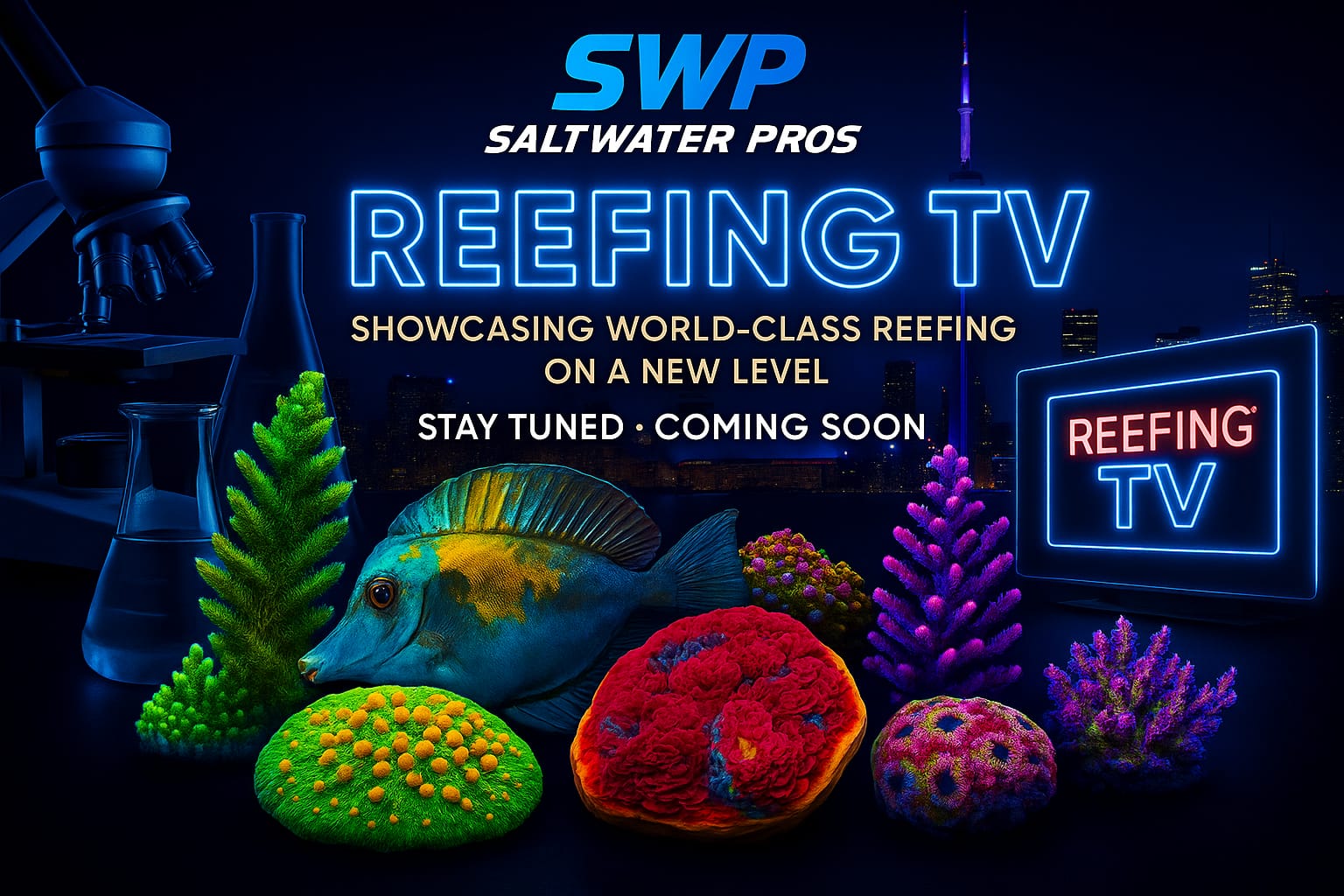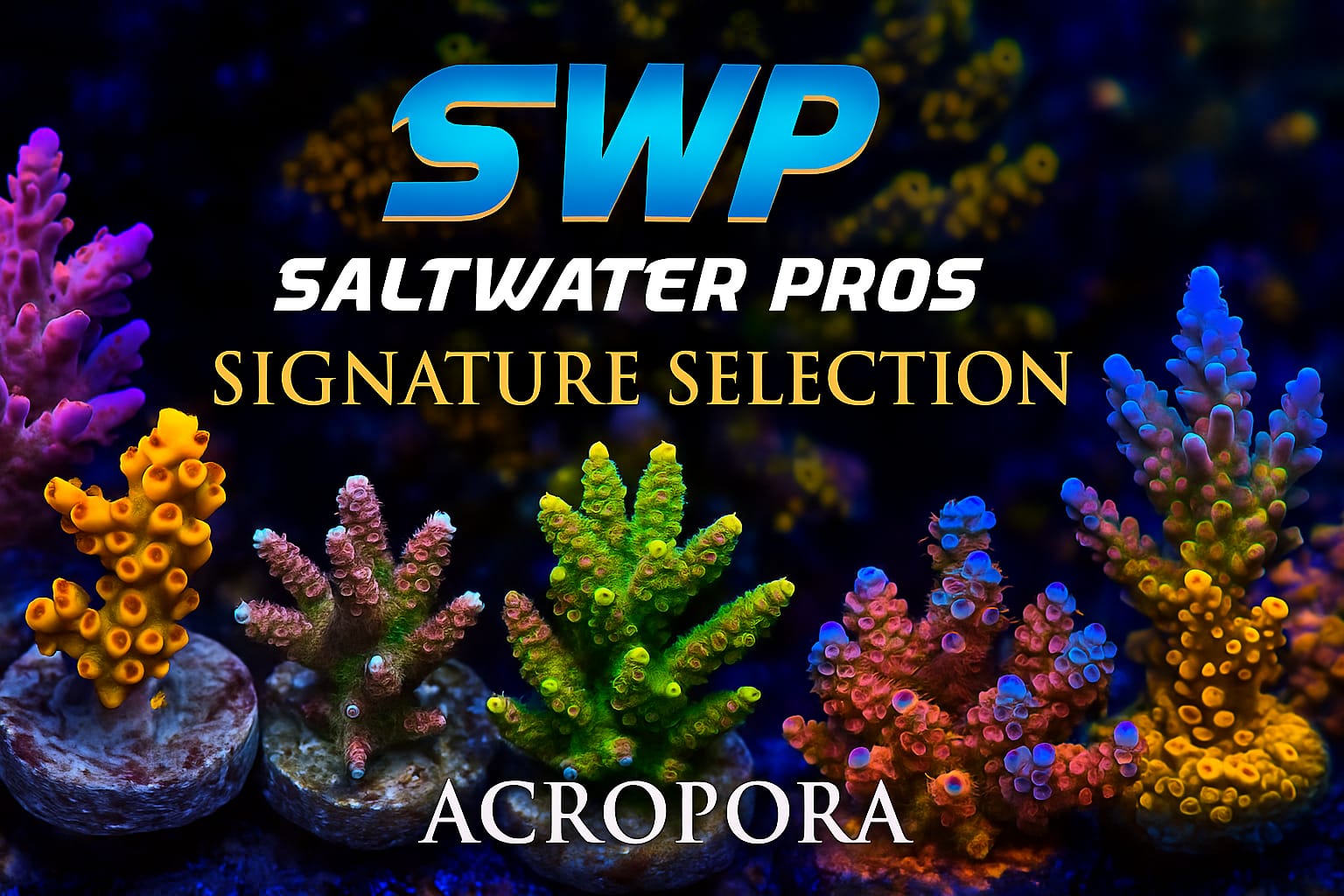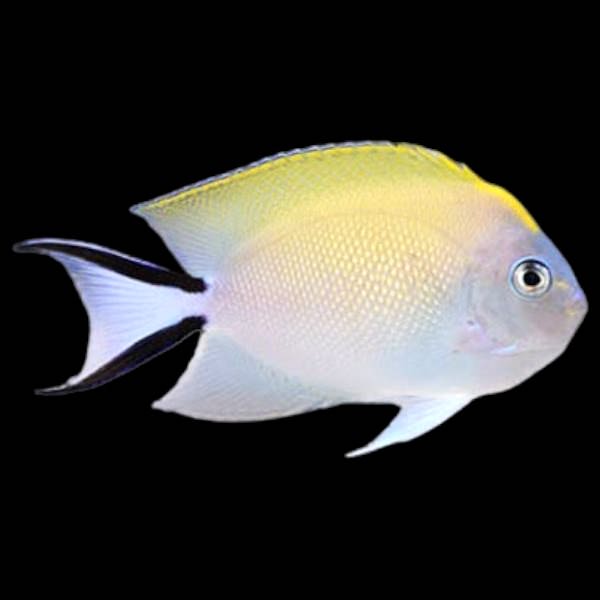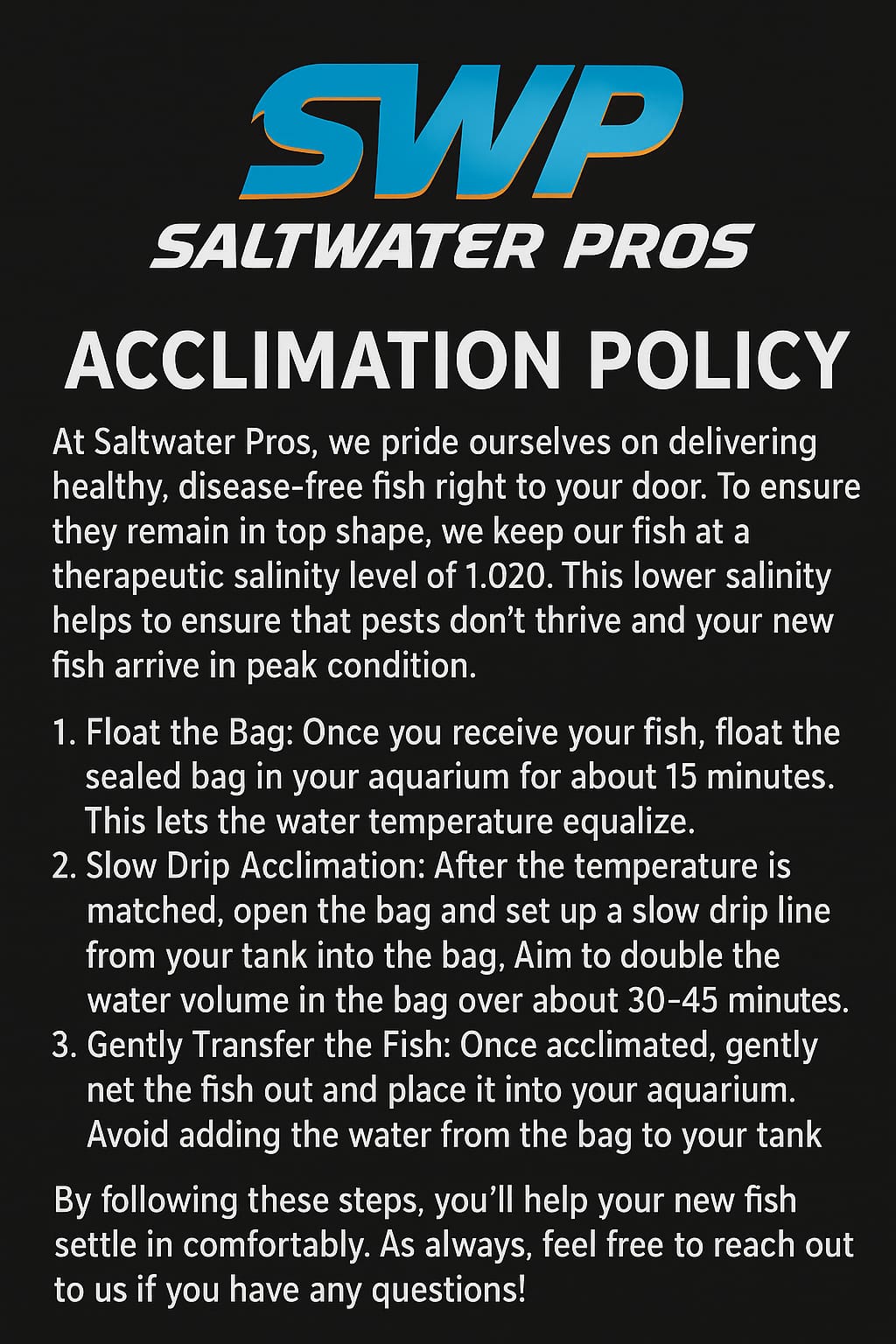Description
Click HERE to read our Dead On Arrival (DOA) policy.
Click HERE for how to acclimate the fish.
Genicanthus melanospilus, commonly known as the Spotbreast Angelfish or Black-spot Angelfish, is a species of marine angelfish belonging to the family Pomacanthidae. These angelfish are found in the Indo-Pacific region, specifically in the waters around Indonesia, the Philippines, and northern Australia.
Physical characteristics: The Spotbreast Angelfish has a striking and colorful appearance, typical of many angelfish species. It features a predominantly dark body with a beautiful pattern of blue and yellow markings on the head and fins. A prominent characteristic of this species is the black spot or marking on the pectoral fin, which gives it its name.
Size and behavior: Like other angelfish, Genicanthus melanospilus can grow to a moderate size, usually reaching around 8 inches (20 centimeters) in length. They are generally peaceful fish but can exhibit some territorial behavior, especially when kept in smaller aquariums or with other aggressive tankmates.
Diet: In their natural habitat, Spotbreast Angelfish mainly feed on zooplankton and small invertebrates. In a captive environment, they can be fed a varied diet that includes high-quality flakes, pellets, frozen foods like brine shrimp and mysis shrimp, as well as occasional live foods to supplement their nutrition.
Aquarium care: When keeping Genicanthus melanospilus in an aquarium, it is essential to provide them with ample swimming space and plenty of hiding spots to reduce stress and territorial behavior. A tank size of at least 75 gallons is recommended for a single fish, with larger tanks being better for multiple individuals.
Compatibility: The Spotbreast Angelfish can be housed with other peaceful species in a well-maintained and appropriately sized aquarium. However, caution should be exercised when keeping them with other angelfish, as they can be territorial and may not tolerate certain species.
Breeding: Breeding Genicanthus melanospilus in captivity is challenging and rarely achieved. They are known to be protogynous hermaphrodites, meaning they start their lives as females and can later change to males. This can further complicate the breeding process.
- Care level: Moderate
- Temperament: Peaceful
- Diet: Omnivore
- Reef Compatible: With Caution
- Family: Pomacanthidae
- Minimum Tank Size: 120 gallons
-
Size: Small 1" to 2"










